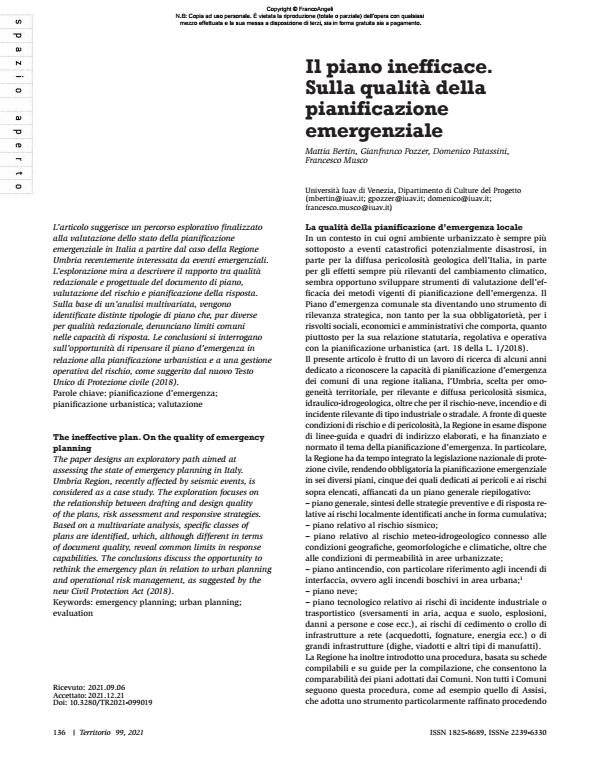The ineffective plan. On the quality of emergency planning
Journal title TERRITORIO
Author/s Mattia Bertin, Gianfranco Pozzer, Domenico Patassini, Francesco Musco
Publishing Year 2022 Issue 2021/99
Language Italian Pages 13 P. 136-148 File size 751 KB
DOI 10.3280/TR2021-099019
DOI is like a bar code for intellectual property: to have more infomation
click here
Below, you can see the article first page
If you want to buy this article in PDF format, you can do it, following the instructions to buy download credits

FrancoAngeli is member of Publishers International Linking Association, Inc (PILA), a not-for-profit association which run the CrossRef service enabling links to and from online scholarly content.
The paper designs an exploratory path aimed at assessing the state of emergency planning in Italy. Umbria Region, recently affected by seismic events, is considered as a case study. The exploration focuses on the relationship between drafting and design quality of the plans, risk assessment and responsive strategies. Based on a multivariate analysis, specific classes of plans are identified, which, although different in terms of document quality, reveal common limits in response capabilities. The conclusions discuss the opportunity to rethink the emergency plan in relation to urban planning and operational risk management, as suggested by the new Civil Protection Act (2018).
Keywords: emergency planning; urban planning; evaluation
Mattia Bertin, Gianfranco Pozzer, Domenico Patassini, Francesco Musco, Il piano inefficace. Sulla qualità della pianificazione emergenziale in "TERRITORIO" 99/2021, pp 136-148, DOI: 10.3280/TR2021-099019